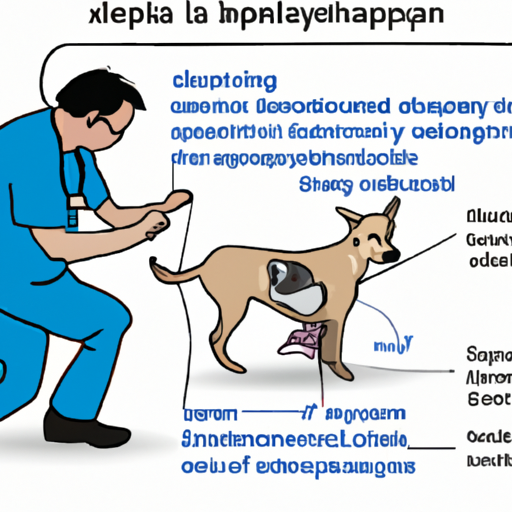As a caregiver, there’s no doubt that the health and well-being of your canine companion is of utmost importance to you. One common ailment that afflicts many dogs, especially as they age, is hip dysplasia. This condition can cause your dog discomfort and significantly impair their mobility. But don’t fret, there are steps you can take to support your dog and make their life as pleasant as possible.
1. Understanding Hip Dysplasia
Hip dysplasia is a genetic condition that primarily affects larger breeds but can occur in dogs of all sizes. It’s characterized by an abnormal formation of the hip socket. In a healthy hip joint, the ball (the top of the femur) fits snugly into the socket (part of the pelvis), allowing for smooth movement. In a dog with hip dysplasia, the ball and socket do not fit together properly, leading to painful wear and tear.
2. Recognizing the Symptoms
Early detection is key in managing this condition. Keep a close eye on your dog’s behavior and mobility. Here are some symptoms you may notice:
- Difficulty getting up or down
- Reduced activity
- Limping or favoring one leg
- A swaying gait
- Reluctance to run, jump, or climb stairs
3. Providing a Supportive Environment
One of the simplest ways to help your dog is by making some changes in your home environment. Here are some things you can do:
-
Provide a comfortable bed: Orthopedic dog beds can provide the support that dogs with hip dysplasia need to sleep comfortably.
-
Invest in pet-friendly ramps or stairs: These can help your dog navigate stairs or get onto furniture without straining their hips.
-
Control your dog’s weight: Extra weight puts additional strain on your dog’s joints. Feed them a balanced, portion-controlled diet.
| Tips to Help Your Dog | How They Help |
|---|---|
| Provide a comfortable bed | Supports joints and promotes comfortable sleep |
| Invest in pet-friendly ramps or stairs | Reduces strain on hips |
| Control your dog’s weight | Lessens pressure on joints |
4. Considering Medical Interventions
In some cases, medication or surgery may be necessary. Always consult with your vet to discuss the best course of action for your individual dog. Here are some treatment options:
- Non-Steroidal Anti-Inflammatory Drugs (NSAIDs): These can help manage pain and inflammation.
- Joint supplements: Supplements such as glucosamine and chondroitin can help support joint health.
- Physical therapy: Regular, controlled exercise can help strengthen the muscles around the hip joint.
- Surgery: In severe cases, surgical intervention may be necessary.
5. The Power of Love and Patience
Finally, remember to shower your furry friend with lots of love and patience. Living with hip dysplasia can be challenging, but your gentle touch and comforting presence can make all the difference in their world.
Frequently Asked Questions
Q: Can hip dysplasia be cured?
A: Unfortunately, there is no cure for hip dysplasia, but the condition can be managed with appropriate treatment and lifestyle modifications.
Q: Can a young dog have hip dysplasia?
A: Yes, hip dysplasia is a genetic condition and can affect dogs of all ages, but it’s more common in older dogs.
Q: How can I prevent my dog from getting hip dysplasia?
A: While you can’t entirely prevent hip dysplasia, especially if your dog is genetically predisposed, keeping them at a healthy weight and providing regular, moderate exercise can help maintain good joint health.
Q: Is hip dysplasia painful for dogs?
A: Yes, hip dysplasia can cause discomfort and pain, but there are many ways to manage these symptoms and improve your dog’s quality of life.



